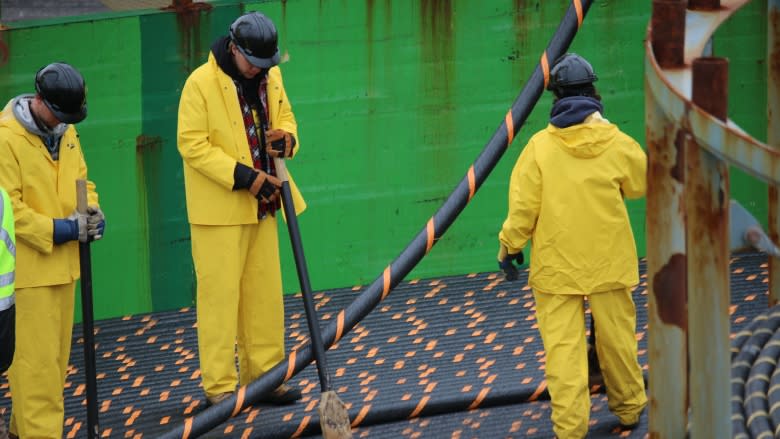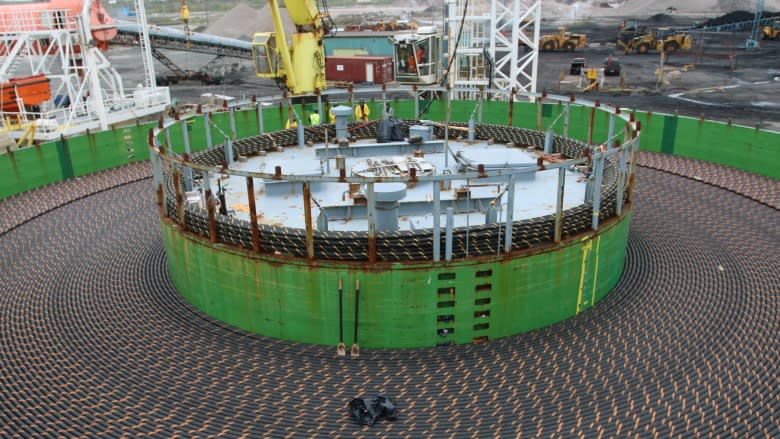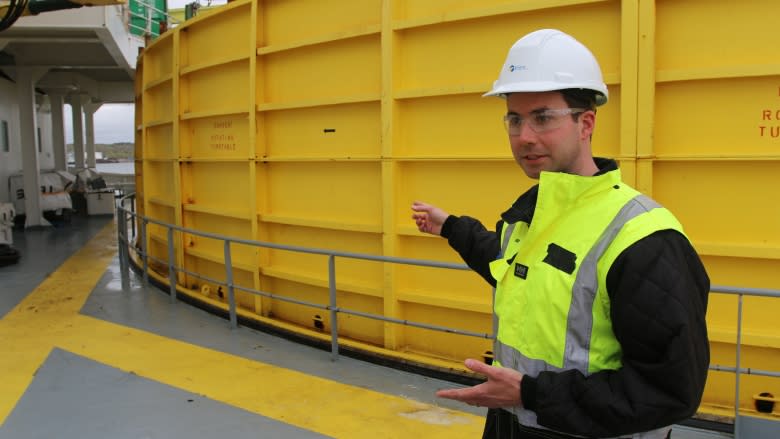The simple way Maritime Link crews are defrosting cold subsea cables
The complicated installation of two subsea cables to carry electricity between Newfoundland and Nova Scotia has faced one unavoidable challenge — a cold spring that has made the cable tough to handle at times.
The company behind the Maritime Link project, Emera, is nearly ready to place a second cable on the ocean's floor. Reporters were given a tour of the vessel that will lay the cable on Friday in Sydney, N.S.
Rory Cashin, an Emera employee working on the installation, says it's going so well so far and they're actually ahead of schedule. The first cable from Newfoundland was anchored at Point Aconi, N.S., on May 14. But the weather almost threw a wrench in those plans.
"We've been intensively pouring hot water and heating the cable from underneath," said Cashin.
"I guess it's a problem we're used to in Atlantic Canada. But it's pretty bad when even the Norweigans are complaining about how cold it is for May."
The first cable was manufactured in Norway and transported to Canada aboard a Norwegian ship, the Skagerrak.
Complicated process
The crew is currently unspooling the second cable from a barge to the Skagerrak. The 170-kilometre cable weighs close to 5,500 tonnes, or about half the weight of the Eiffel Tower, said Cashin.
"All these operators are working in tandem. They have to match speeds between the turntable and also the pulling devices and also the ship's captain and the vessel crew. Any mismatch at all could be disastrous and could cause delays."
Important connection
Once installed, the cable is designed to have a 50-year lifespan.
The $1.7-billion Maritime Link project marks the first power connection for Newfoundland off the island.
Tests will begin between Newfoundland and Nova Scotia, and power is expected to flow through the Maritime Link by the end of the year.
The Maritime Link will eventually transfer electricity from Labrador's Muskrat Falls hydro project, which has been hampered by delays.






